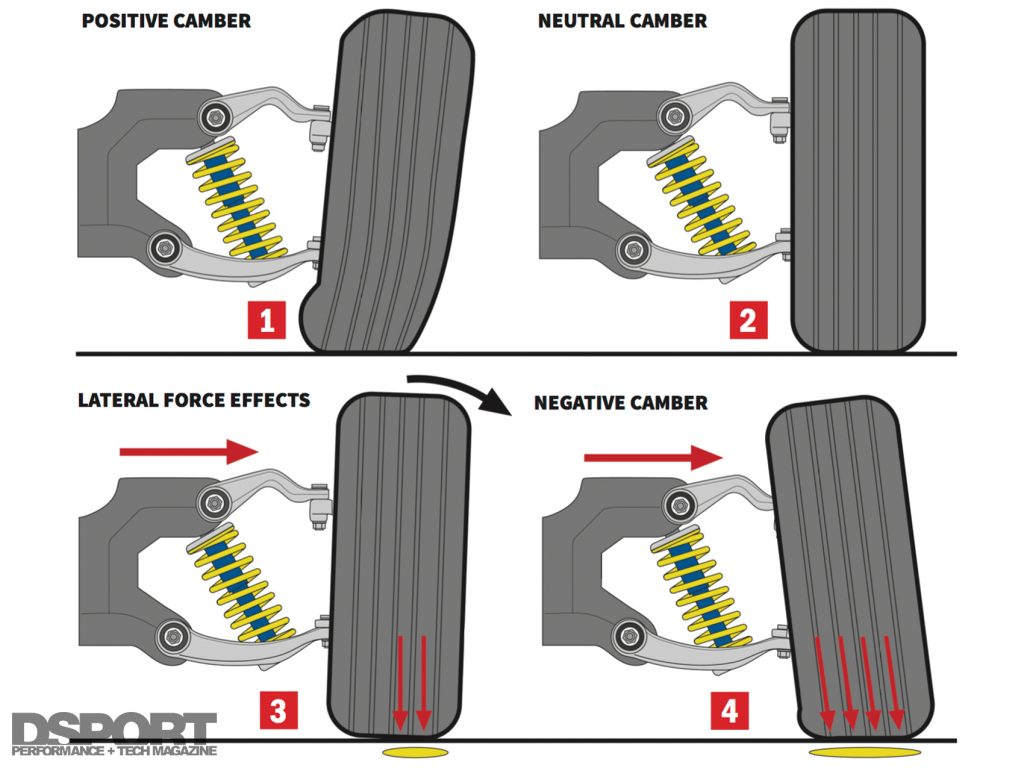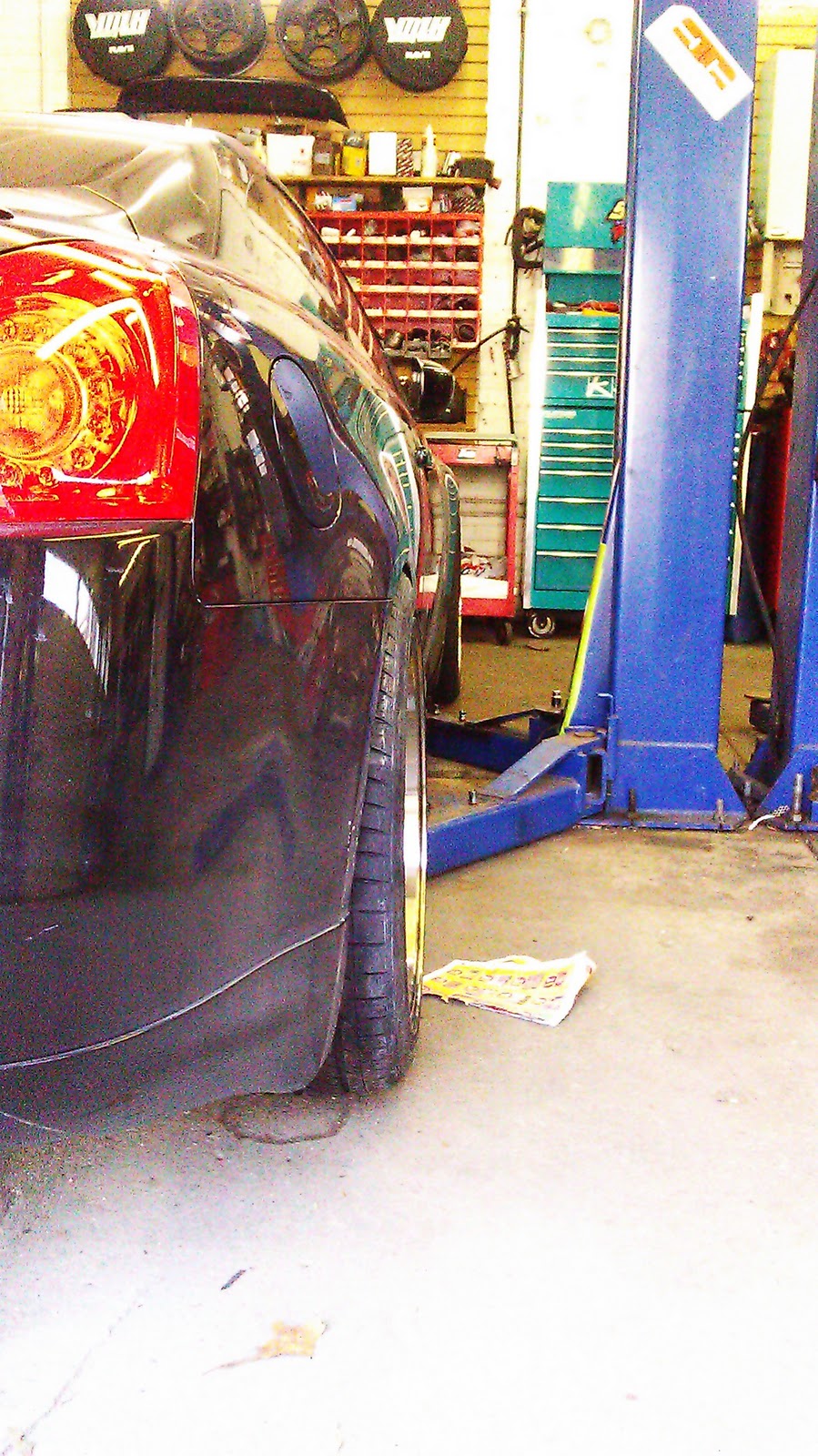
However, a setting with too much positive caster angle can also cause problems:


The effect is called “camber recovery”, that is, the suspension’s ability to increase camber when cornering, preventing the outer tire from moving its contact area towards the outside of the tread, thus decreasing its contact footprint and hence the grip. the greater the caster angle, the greater the effect of the variation of the camber in the curve (the camber obtained in the curve is called dynamic camber). When cornering, the caster takes on even more importance, because there is a variation in the magnitude of the camber angle of the steering wheels. More precisely, the outer wheel will tend towards a more negative camber (the minus sign is when the top of the wheel tilts towards the center of the car), while the inner wheel will tend towards a positive camber. This happens in a proportional way, i.e. The mechanical trail therefore assumes a significant importance since its length actually determines the magnitude of the self-aligning moment: a shorter length of this parameter will correspond to a slower and weaker realignment, vice versa with a more extended arm there will be a more energetic return. Remember: other factors that affect the mechanical trail are tire and rim size, inflation pressure and tire wear.

The caster angle in turn determines another important parameter, namely mechanical trail. Still looking at the vehicle from the side, the mechanical trail is the distance between the center of the contact area and the point of junction between the ground and the steering axis. To explain this, we introduce another parameter: the mechanical trail. Why can a caster angle be good for one car but may not be ideal for another? On Assetto Corsa Competizione we can in fact find cars like the Porsche 911 GT3-R that require a low caster angle, equal to +6.7 degrees and other cars that require a higher angle, such as the Ferrari 488 GT3 Evo and the Mercedes AMG GT3 Evo, greater than +12 degrees, and then there are cars like BMW with a caster angle of about +9.4 degrees. In common road cars the caster angle value is usually between +3 and +5 degrees and is usually more pronounced on rear-wheel drive cars. In fact, on those with front-wheel drive and all-wheel drive it tends to be more contained, because there is already a self-aligning effect caused by the traction, which produces a forward displacement of the center of the contact area of the tire, which generates a moment which tends to bring the wheels parallel to the direction of travel. These cars have a low positive caster angle as the steering needs to be light and manageable and to reduce vibration. In sports and competition cars, the caster angle can assume much greater values (for example between +12 and +13 degrees). The first purpose of the caster angle is to give stability to the steering wheels, which would otherwise be unmanageable. Since the center of the contact area is some distance away from the steering axis extension, a realignment moment (torque) is generated every time an attempt is made to deflect the wheel from straight travel. This self-aligning moment is felt every time the steering wheel is turned, noting a certain opposition of the same, which tends to return to the “center”, that is to the zero angle. If the angle is small, the realignment will be slow and bland, vice versa with higher angles there is a more marked return of the steering and a greater hardness of the same.


 0 kommentar(er)
0 kommentar(er)
